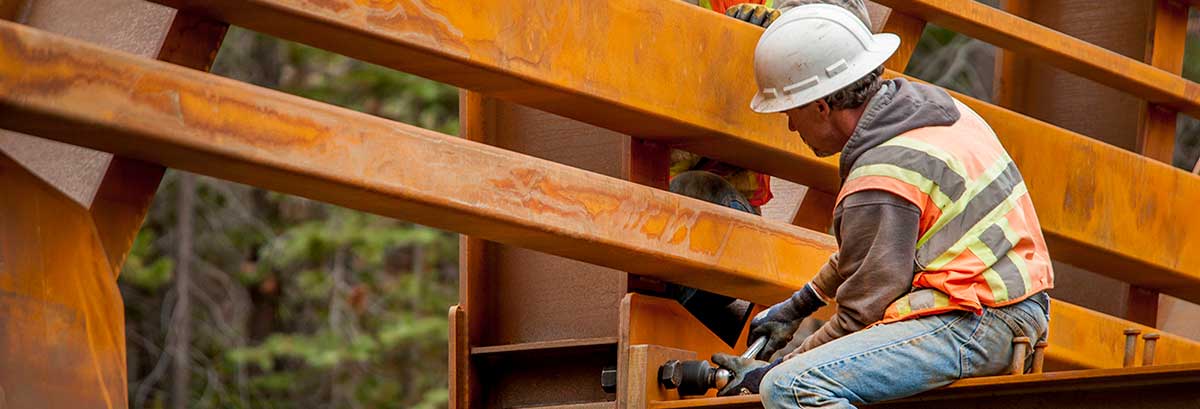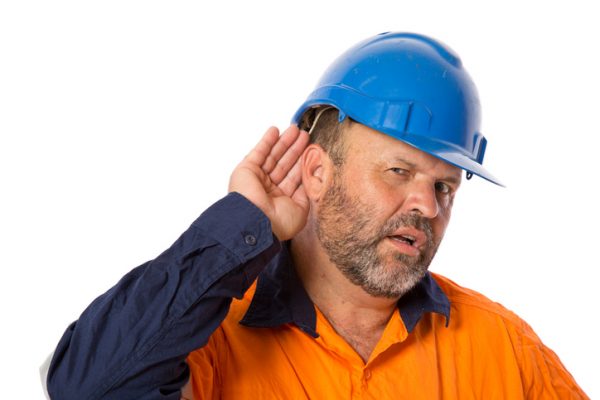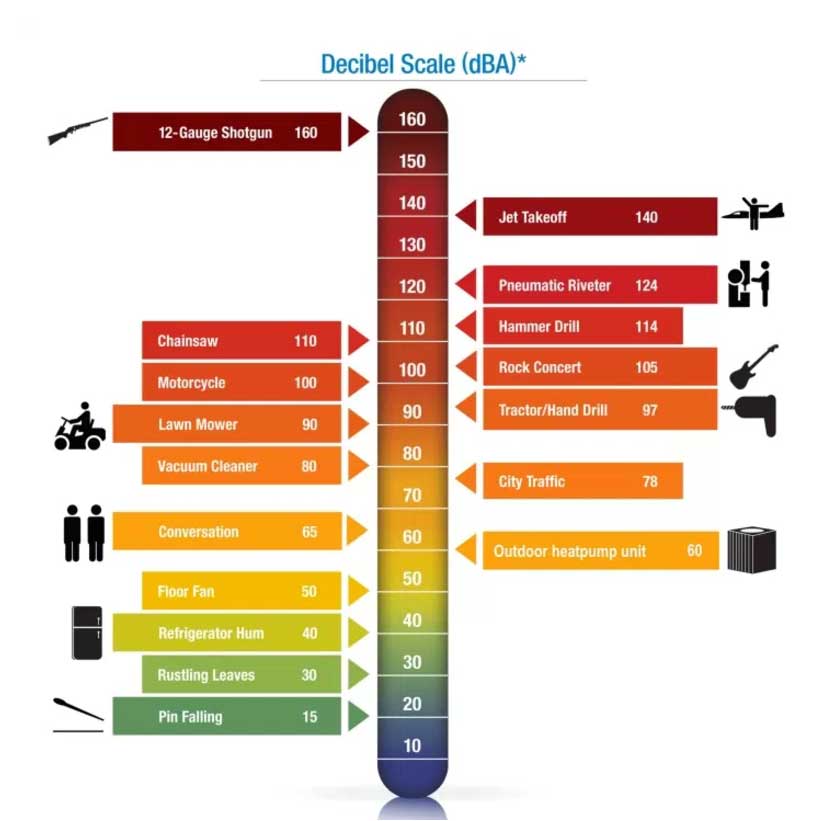Work Injury

Occupational Hearing Loss and Tinnitus
Many Americans work in jobs that can damage their hearing on a permanent basis. According to the National Institute of Occupational Health and Safety, there are more than 22 million Americans working in environments with dangerous levels of noise that can damage their hearing.
No occupation can be guaranteed 100% safe when we talk about potential damage to hearing, but there are some kinds of jobs where occupational hearing loss is more likely to occur.
Most occupational hearing loss is a result of long term exposure to loud noise levels. But damage to hearing can be the result of a single exposure to high decibel (dBA) noise as well as particular chemicals known as ototoxic chemicals.

How Serious is the Problem of Occupational Hearing Loss?
– Four million workers in the US work in damaging noise levels daily.
– 10 million people in the US suffer from the occupational hearing loss.
– 22 million workers experience occupational noise levels that are a threat to their hearing each year.
Recent statistics show that approximately 23,000 workers were diagnosed with occupational hearing loss serious enough to cause a deterioration in hearing ability. The manufacturing sector accounted for the highest proportion of these cases.
What kinds of jobs are the most likely to cause hearing loss?
The three types of occupation that are most likely to lead to the occupational hearing loss are:
Manufacturing
The level of noise commonly experienced on the manufacturing floor make the occupational hearing loss the most common work-related condition in the manufacturing industry. It is claimed that as many as 80% of workers in manufacturing suffer from some level of hearing loss.
Most damage to hearing caused by working in manufacturing occurs in the first 10 years of employment. As the deterioration in hearing is a gradual process, most sufferers are not aware of their problem until it is too late to help them.
Construction, Carpentry and Mining
Many regulatory agencies recommend that, over an eight hour working day, the average level of noise should not exceed 85-90 decibels (dBA). A lot of equipment used in these three industries operate beyond this recommended 85 dBA.
It is estimated that construction workers spend as much as 70% of their time in environments with dangerous noise levels. Yet, they only use some form of protection for their ears less than 30% of that time.
The mining and construction industries have the highest percentage of workers experiencing harmful noise levels at work.
Agriculture and Farming
The director of clinical programs for the National Institute on Deafness and Other Communication Disorders claims more than 30% of farmers in the United States suffer from some level of hearing damage.
Farm vehicles, such as tractors and combines, and farm equipment operate at sound levels that expose farm workers to harmful noise on a daily basis.
It is important to remember that these are not the only kinds of jobs which are harmful to hearing. High levels of noise, either sustained or isolated, can be experienced in other fields of employment.
How Does Occupational Hearing Loss Occur?
The most common cause of occupational hearing loss is through being repeatedly exposed to noise above 85 dBA over long periods of time.
The risk of damaging your hearing depends on two factors: the level of the noise and how much exposure you experience. As the noise level increases, the duration of exposure to protect your hearing decreases. For instance, the effects of experiencing a noise level of 85 dBA for eight hours a day could be the same as experiencing a level of 110 dBA for only a few minutes.
The audiogram below with x and o lines is an example of a person with industrial deafness.
Common Signs and Symptoms of Occupational Hearing Loss
You may be suffering from occupational hearing loss if you experience some or all of the following:
– You often have to ask people to repeat what they have said.
– You feel that people are not speaking clearly, or loudly enough.
– You speak loudly.
– You have trouble hearing clearly when you are in noisy places.
– You play the TV or radio at loud volume.
– When someone is speaking to you, you need to turn one ear toward them.
– Need to be close to someone when they are speaking to you.
– You do not react when there is a loud sound close to you.
What You Should Do If You Think You Have Occupational Hearing Loss
Occupational hearing loss is usually progressive, and you may not realize you are suffering from the condition until it is well established.
It is important to understand that once your hearing has been damaged, it cannot be returned to its former level. This damage is normally permanent.
If you think you are experiencing some of the signs and symptoms listed above, you should arrange a hearing test. This will be carried out by one of our qualified hearing health professionals here at Hear Now.
It is important to establish the cause of the hearing loss as it may not be connected to your occupation. Once the cause has been established, our hearing health professionals will be able to advise you on the best course of treatment to reduce the effects of the loss of hearing
There are three main aims of any course of treatment recommended by Hear Now.
First, we try to prevent you from suffering any further damage loss of hearing.
Next, we look to improve your ability to communicate as effectively as possible with your remaining hearing.
Finally, we help you to develop coping skills to alleviate any problems you are experiencing through your hearing loss.
How can Hear You Now help You?
Hear Now are specialists in treatment for noise induced hearing loss and tinnitus. We can help diagnose hearing conditions through a simple test, propose solutions and provide ongoing support.
We believe achieving improved hearing takes more than technology – it’s a partnership.
If we cannot help you, we will tell you or suggest where you might get further help.






